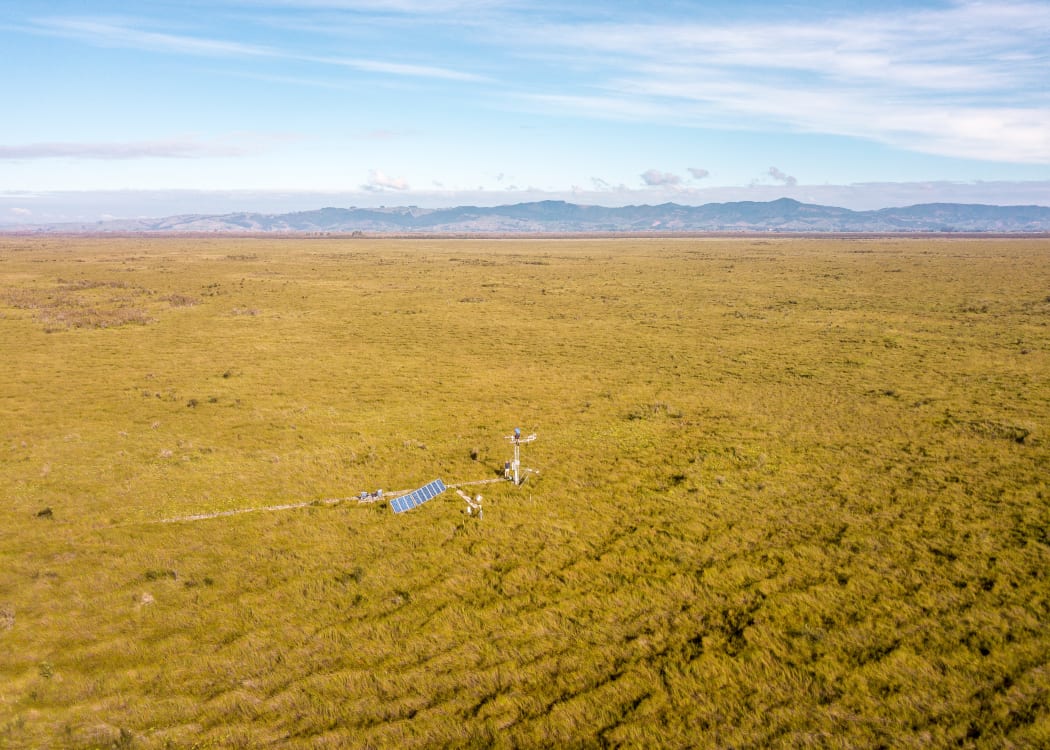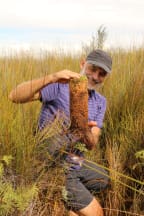When drained for farming, New Zealand’s little-appreciated peat bogs are among the worst culprits of carbon emissions in the country.
Conversely, when returned to their wetland glory these bogs are incredibly effective carbon sinks, that could make up for carbon loss from soils elsewhere.
Currently, New Zealand’s emissions-reduction plans favour the use of forestry, but research by Waikato University ecohydrologist and wetland expert Dr David Campbell suggests wetlands are of vital importance.
Campbell has been conducting hydrology and carbon research in Kopuatai, in the Hauraki Plains and the wider Waikato region for more than two decades.
Kopuatai is a pristine freshwater wetland that is the largest unaltered peat bog in the country.

The scientific station at Kopuatai Photo: Supplied
Wetlands are wildly misunderstood, he told Kim Hill.
“The simplest way of thinking about it is we've got swamps, which are usually attached to river systems.
“And then at the other end of the nutrients spectrum, you have bogs, which are purely fed by rainfall, so that really low nutrient and very challenging conditions for plants and animals to survive.”
New Zealand’s peat bogs, particularly the ones in Waikato and Northland are global anomalies, he says.
And it’s because of the plants that have habituated there.
“It really comes down to the plants which by chance have arrived in New Zealand and have developed certain properties which have made them proficient at out competing other plants in these wet environments, managing the difficulties of low nutrients and high acidity and accumulating huge amounts of carbon as the peat underneath them.”
Over time vast amounts of peat accumulates, he says.
“Kopuatai, 20kms long and between 6 and 8kms wide is actually not flat but a great dome, he says.
“There are places where the peat is up to 14 meters deep. But probably an average depth would be eight to 10 meters depth as you're getting close to the edges. And the interesting thing is that the surface, the upper parts of the peat land, are six to eight meters above sea level.”
The peat has accumulated over the last 11,000 years at a rate of about a millimetre per year, he says, and continues to build.
Draining peatland has had grievous consequences, he says.
“Every year, a hectare of farmland that's drained, peat loses between 20 and 30 tons of CO2. And that's before you put animals on it. So that's just the rate of decomposition and oxidation.
“Because as soon as oxygen gets into that peat, it interacts with the carbon to produce carbon dioxide and thus floats away.”
Now the research at Kopuatai is being used to start thinking about how to restore these wetlands.
“The trick with restoring wetlands is you have to get the hydrology right, so you've got to turn them into wet places again.

Photo: Veronika Meduna
“And unfortunately that's not easy for wet peatland in particular. You've actually taken it so far away from being a peat land, the peat has oxidised and shrunk, you've replaced the ecology with a completely different one.
“The nutrients are all different types of really hard to come back. But we really need to find a way to do that.”
He and colleagues are looking at techniques for doing just that.
“The plants that are in Kopuatai one of them especially a plant called empodisima robustum is the true ecosystem engineer of that place.
“This one plant has developed all of these tricks, which are ultimately responsible for the entire ecosystem being there.”
These plants form such a dense canopy water evaporation is significantly reduced, he says.
“Even in a drought, you can wander into Kopuatai and you're stomping through water up to your ankles, and yet the air is dry above.
“It has an incredibly low rate of evaporation, half to a third of what you'd expect from pasture just on the other side of the drain.”
There are other degraded wetlands where they will try to recreate a facsimile of the ecosystem at Kopuatai.
“We need to understand what assistance does it need to start turning on those ecosystem engineering properties.”

